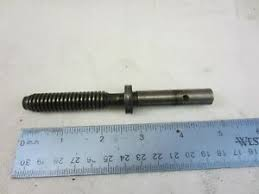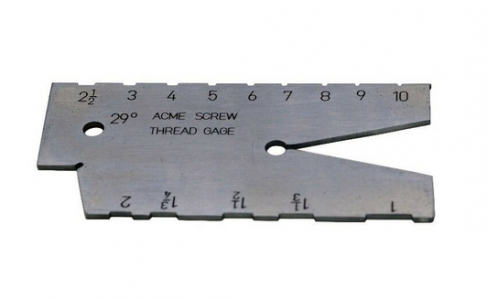- Joined
- May 27, 2016
- Messages
- 3,469
A very mundane question, I know, but how does one discover where the wear is in an ACME thread rod and nut?
No question, the pair are a bit in trouble! The rod is the 1/2" x 10TPI left-hand ACME used on a tailstock, and the "nut" is the internal thread cut into the quill. One flops about within the other in really sloppy manner. Functionally, not such a big deal, because a quill gets clamped up anyway, but other damage has forced a re-make. The plan is to now use a phosphor-bronze insert for the quill. The question is about the external thread on the rod..
The minor diameter of the ACME external thread should still be at it's original size (one hopes), because I think it is not supposed to ever rub on the minor diameter of the nut. Similar for the major diameters. I am thinking any wear has to be on the 29° side faces.
Just looking at two ACME rods, one in better condition, I can see one has thread "tops" wider than the other. I get the impression the "valleys" in the worn external thread are wider than the tops. Threading the rod into it's quill, and measuring the axial "play" is a bit awkward to do, but I get it at about 0.021", using a digital caliper.
I just don't know how to tell how much of that belongs to the rod, and how much to the nut. I was hoping to only replace the nut.
Is there a wisdom about estimating ACME thread wear?
No question, the pair are a bit in trouble! The rod is the 1/2" x 10TPI left-hand ACME used on a tailstock, and the "nut" is the internal thread cut into the quill. One flops about within the other in really sloppy manner. Functionally, not such a big deal, because a quill gets clamped up anyway, but other damage has forced a re-make. The plan is to now use a phosphor-bronze insert for the quill. The question is about the external thread on the rod..
The minor diameter of the ACME external thread should still be at it's original size (one hopes), because I think it is not supposed to ever rub on the minor diameter of the nut. Similar for the major diameters. I am thinking any wear has to be on the 29° side faces.
Just looking at two ACME rods, one in better condition, I can see one has thread "tops" wider than the other. I get the impression the "valleys" in the worn external thread are wider than the tops. Threading the rod into it's quill, and measuring the axial "play" is a bit awkward to do, but I get it at about 0.021", using a digital caliper.
I just don't know how to tell how much of that belongs to the rod, and how much to the nut. I was hoping to only replace the nut.
Is there a wisdom about estimating ACME thread wear?



